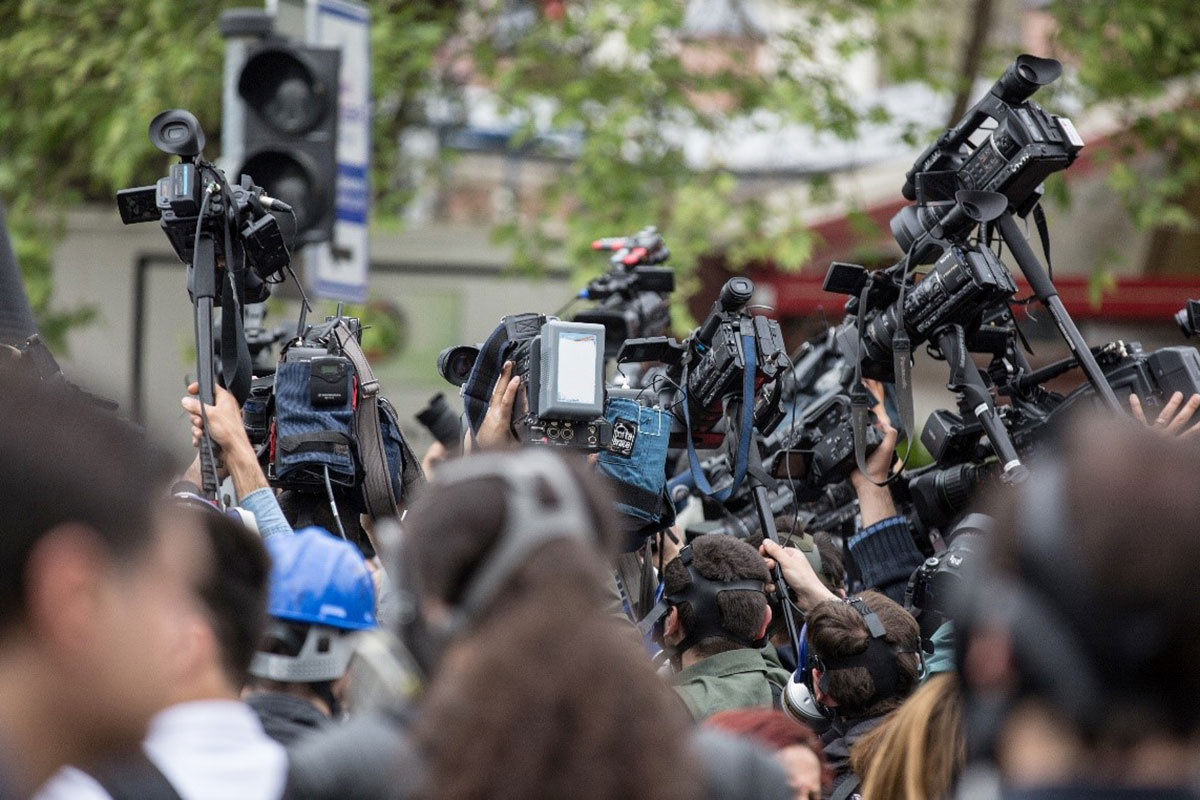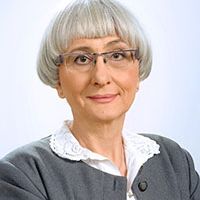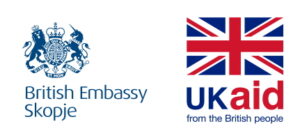The significantly higher representation of men as a source of information and as interviewees compared to women is a continuous media practice in Serbia, which has been observed in all conducted analyses and media monitoring activities since 1996 until the latest one in 2022.
The underrepresentation of women in the public sphere is a phenomenon that is still current in the post-transition countries of the Western Balkans, which includes Serbia, but also in the developed world.
The invisibility of women as sources of information in the media is particularly evident, regardless of the fact that in other areas of the public sphere they are increasingly gaining space as experts in certain professions, such as in the political, cultural and sports life, so it would be logical for them to be much more present as sources of information in the media.
At the same time, women are present as creators of information. Therefore, female reporters, editors and media managers are no longer rare, but this did not contribute to the presence of women as a source of information in the media being equal to that of men, especially in the news and political programs of the national TV stations, which are the most influential in the creation of public opinion.
These claims are confirmed by both domestic (Serbia) and international research that has been conducted for years, unfortunately, without significant impact on editorial policies, as the current situation shows a downward trend.
Women are represented in the news media, but only as office holders
The significantly higher representation of men compared to women as a source of information and as interviewees is a continuous media practice in Serbia, which has been observed in all conducted analyses and media monitoring activities from 1996 to the latest in 2022 by the research team of the Novi Sad School of Journalism.
It is a reflection of the still widespread gender inequality in the post-transition traditionalist society, both at the vertical level (women do not have access to the highest positions in the sectors in which they work, regardless of their expertise; the "glass ceiling" is omnipresent) and on a horizontal level (women are paid less for the same jobs and they have less visibility in the public sphere).
At first glance, it seems that women are present in public life and occupy the highest positions such as the Prime Minister, ministers in the most visible positions, bank managers (Aik Bank, Erate Bank), store chains (Mercator), large corporations (Delta Holding), IT (SAS), but they are not visible in the media as sources of information and relevant interlocutors for the media that can contribute to the formation of public opinion on important topics of social practice.
Although women are more represented in the lower, perhaps middle, and rarely in the highest levels of management, they have not contributed to the improvement of the gender balance in the media management structure, nor have they influenced a greater presence of content on women's rights in programs such as the public broadcasting service as well as commercial broadcasters and cable operators.
Admittedly, the Prime Minister and only one or two female ministers, although there are more of them in the government, constantly get air time on all radio broadcasters in Serbia, just because they are in positions where decisions are made that must be presented in the media because they are of public interest. So those female political representatives are media sources of information and interviewees not because they are competent, but because their "functions" are of public importance. At the same time, they never advocated for gender equality and women's rights in their statements.
As the results of numerous monitoring activities show, the media not only reflect the social reality in which men are still in the most important positions among decision-makers and publicly verified individuals, but media themselves are also burdened with stereotypes and prejudice, so in directly quoting and interviewing the subjects of social practice, whether they are from the world of politics, economics, art, culture, education, judiciary, health, sports, they prefer to give the advantage to men.
The last monitoring carried out by the team of the Novi Sad School of Journalism, whose data we use in this text, included about 10,000 minutes of media material sampled in August and early September 2022. The sample consisted of morning programs and central news shows of the public broadcasting services (RTV and RTS), providers of commercial media services (B92, TV Happy, Pink TV, PRva TV) and cable operators with strongly developed news programs N1 and NovaS.
Downward trend in the presence of women as sources of information
The results of numerous surveys indicate a downward trend in the presence of women as sources of information, despite the upward trend in the representation of women in positions such as reporters, but also editors and managers in the media. In practice, the advocacy of liberal feminists for the equal presence of women in society did not prove to be effective, where women would occupy traditionally male positions and thus gain power.
Liberal feminists believed that the media needed to change by publishing more portraits of women in non-traditional roles and avoiding sexist language, as well as by employing more women in the media sector.
These efforts by liberal feminists to improve the dehumanizing style of completely "masculinized" news have indeed resulted in the employment of a large number of female journalists in the media sphere. At the same time, the result of their efforts was, according to van Zonen (1994), that in the journalistic profession, which ceased to be a prestigious exclusively male bohemian profession, there was a decrease in wages and a status devaluation of the profession.
What is most significant, the expected increase in the influence of female journalists on the editorial policy of the media in increasing the number of women as sources of information and interviewees did not happen.

Source: freepik.com
The same thing happened in Serbia, and the research even show a downward trend. Wages in the media industry have decreased with the entry of a large number of women into the profession, except for those who, sometimes justifiably and sometimes unjustifiably, have become the brand of the television station they work for, and at the same time, the number of gender equality topics has not gone up, nor has the number of women interviewed and directly quoted increased. On the contrary, there are fewer and fewer women who are quoted, unless they are office holders (prime minister, minister).
Public broadcasting services in Serbia do not recognize women as a credible source
Serbia's public broadcasting services, which, according to the Law on Public Media Services (2014) must support the public interest (Article 7) in a way that respects gender balance, do not even come close to complying with this. In the observed period, the information program of Radio-Television of Vojvodina had a ratio between men and women more than three times more in favour of male subjects (73% of the total number of speakers), compared to female subjects (19%). A similar relationship is observed in the public broadcasting service of Serbia (RTS). The gender of the subjects was significantly more often male (72%). Female subjects were three times less represented (23%).
It must be taken into account that the public broadcasting service, due to its special position in the media scene, is obligated to advocate for gender balance according to the model of affirmative action, instead of aligning with the current positioning of men in the public sphere and only taking their hierarchical place in the political and public sphere as a basic parameter for the selection of information subjects of public importance.
Women were present in news media according to two models - either they were women whose position ensures space in a news show or they were persons from traditionally female areas of public activity (education, health, culture).
Apart from the representatives of the executive power and the Prime Minister, female subjects were mostly represented in the health and culture media units. A large number of foreign and international subjects belonged to the male subject variable. Since the difference in representation is significant, the distinct intention of the broadcaster is undoubtedly clear, although at first sight it may appear to represent only a momentary reflection of the distribution of "power" in society.
However, if the public broadcasting service follows the action plans and strategies of various women's platforms and other women's lobby groups and non-governmental organizations, as well as international institutions, it would have a good model of how to increase the participation of women as subjects in news shows.
Commercial broadcasters and cable operators ignore the principle of gender balanced information sources
Commercial national TV stations on the territory of Serbia do not have a strict obligation like the public broadcasting services to respect the gender balance of information sources, which does not mean that such an obligation should not be part of all editorial policies in any modern, democratic society. This is not the case according to the monitoring results of August and September 2022. For example, TV station B92 completely ignores the gender balance. Male subjects are more represented than female subjects, more precisely, over three times more (64%:19%).
The same is the case with TV Happy. Male subjects comprised more than half (59%) and female subjects 17%, while the rest were mixed or unidentified. Pink Television cannot be considered an exemplary broadcaster in terms of the gender balance of its subjects. Men are absolutely dominant, 71% of the cases, and women were in the role of subject only in 21% of the cases. When it comes to the gender of the subjects, according to a similar practice as in the previous monitoring activities carried out by NSSJ, the ratio is slightly better among other commercial broadcasters in the 2022 monitoring. In its news shows, TV Prva quoted and interviewed mostly male actors as a source of information (61%), while female actors were less than half of that percentage (28%).
Cable television stations that emphasize news programs (N1 and Novas) and are considered more exemplary than other broadcasters in terms of topic selection and analytical journalism, also followed the pattern of commercial media service providers when it comes to gender. Thus, in the observed period, at H1, 64% of the sources of information and interviewed persons were male subjects, 25% were female subjects; and Nova with as many as 74% male and 24% female subjects.
The significantly higher representation of the male in relation to the female gender represents, as stated, a continuous media practice observed in all previously conducted analyses and monitoring of the Novi Sad School of Journalism from 1996 to 2022. It is a reflection of the gender inequality still represented in the public discourse, because in management positions, but also in positions that are the primary source of information (state representatives, participants in negotiations, at international events, etc.) there are mostly men.
In order to determine more clearly the media practice of the news shows covered by the monitoring, the gender diversity was separately analysed in the selection of interlocutors for interviews. It is noted that the gender balance is more prevalent in those cases, and the ratio of male to female interlocutors in the interviews from the 2022 monitoring is 8:5.
Therefore, although the general distribution of subjects by gender indicates an evident inequality, the practice that depended exclusively on the media still shows that a more equal representation of both sexes was partially taken into account.
It is no consolation that it is similar everywhere in the world
To be honest, this is, in the real sense of the word, a widespread trend, and in that respect the media in Serbia are not much different from those in the world. This is evidenced by the results of a very competent global longitudinal research. The research is GMMP Who makes the news ? which has been implemented for years, in 116 countries in the world.
For example, during the Covid-19 pandemic, the results of the monitoring of print media, radio and television showed that only 22% of women appeared as experts in the media around the world when it came to female politicians, and 26% of women appeared as experts in the field of science and health, expressed globally.
How to improve the practice according to the proposals of the GMMP in the territory of Serbia, but also in the whole world? First of all, it is very important to reach a public consensus on the need for greater visibility of women in everyday media practice.
And this can be done primarily by the fact that the editors will understand that if there are two equally valid sources, they should always prioritize women and make sure that they at least consistently use gender-sensitive language if it is not already used in the media outlet because that will facilitate public adoption of the language.
Please refer to the Terms before commenting and republishing the content. Note: The views and opinions expressed in this article are those of the author and do not necessarily reflect the views of the Institute of Communication Studies or the donor.


